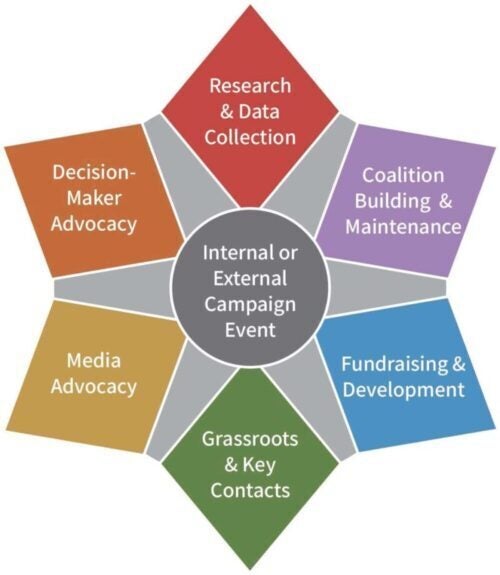 In the era when “fake news” and self-appointed social influencers can move the masses through digital content, it can be tough to break through with stories that shape and change the way decision-makers think about advocating for conditions that support optimal body confidence for youth. Despite recent attempts to discredit science for political reasons, your expertise as a public health professional is still influential and can be amplified through media advocacy.
In the era when “fake news” and self-appointed social influencers can move the masses through digital content, it can be tough to break through with stories that shape and change the way decision-makers think about advocating for conditions that support optimal body confidence for youth. Despite recent attempts to discredit science for political reasons, your expertise as a public health professional is still influential and can be amplified through media advocacy.
Your key decision-makers are influenced by all sorts of media, whether they admit it or not. Media advocacy is about using the media to get key decision-makers to think differently about your issue. Hard news and opinion pieces – including blogs and columns – can be effective ways to influence decision-makers. Check out this column from the Boston Globe to see the power of a story well told. Sometimes good media advocacy does not even mention the proposed legislation but frames the problem in such a way that inspires a call to action. News coverage that highlights the prevalence of eating disorders among young people is going to have to cut through the clutter by offering a perspective that is timely and surprising.
More than data, personal stories are often the one thing that can transform a good campaign into a great campaign. There are a lot of great storytelling tools out there and one of our favorites is Storytelling and the Power of Making Headlines, from M+R Strategic Services. It lays out the five must-have elements of a newsworthy story. Here is a worksheet to go along with this tool.
Message matters
Click below for key messages that will cut through the clutter:
Good media advocacy can be fun, provocative, and emotional. It can feature stories of young people who have struggled with eating disorders, student athletes made ill because of poorly regulated muscle-building supplements, and personal profiles that take a hard look at the ways media and digital distortion contribute to depression, anxiety and other mental health problems. Along with traditional news coverage, social media can generate interest with polls, quizzes, photos, infographics, and even paid advertising. Blogs and podcasts can be quick ways to get information in front of decision-makers. Letters to the editor can be another effective way to reach decision makers through the media with your message. Here is a great tool for developing a letter to the editor from M+R Strategic Services. Use STRIPED’s Fact Sheets and Talking Points to help craft your letter and stay on message.
Do not be afraid to get creative…
Students and adult survivors of eating disorders can be powerful communicators and sometimes the way they describe their own truth is the best proof that something needs to be done. Young people can create vivid photo stories on Instagram detailing the ways that the diet industry works to manipulate children. They can use spoken word contests, poetry slams, essays and other artforms to make their point, the results of their creative truth-telling should be shared with the media that can get it in front of key decision-makers – and it never even has to mention the legislation. Just make sure you are inclusive in your search for messengers, as this issue impacts a diverse set of youth who should be represented in advocacy work. Find additional powerful tools for effective media advocacy here.




